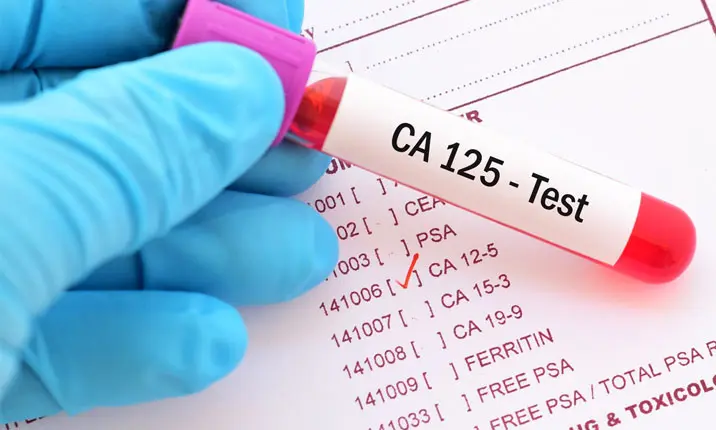Ovarian cancer, unfortunately, shows no definite symptoms in the early stages. The symptoms are subtle and often mimic a stomach ache or bloatedness, which is why most patients present late, when the cancer is already at an advanced stage of progression.
There are several treatment options for ovarian cancer, but these tend to be more effective when the cancer is detected early. The question, then, is how can we detect ovarian cancer early?
Read on to learn more about how to identify the various symptoms associated with ovarian cancer, and the screening tests that you may undergo if ovarian cancer is suspected.
Symptoms of early-stage ovarian cancer
Ovarian cancer is not easily detected and can present with several vague symptoms. You are more likely to experience symptoms if the cancer has spread in your body, but symptoms can show up in the earlier stages too.
The most common signs include bloatedness, pain in your pelvic area or stomach, loss of appetite and constipation. You may also experience extreme tiredness, back pain and loss of weight.
Do not panic if you have been experiencing some of these symptoms, as they can accompany many other benign conditions and may not indicate ovarian cancer. It is important though not to brush away your concerns. Instead, seek medical attention early to get the symptoms checked out and further investigated.
One notable point is that symptoms caused by ovarian cancer tend to be persistent, occur more frequently, and feel more severe. It’s best to consult a doctor promptly if you find that a particular symptom is getting worse and lasting longer than usual, especially if it disturbs your quality of life.
When to see a doctor
The earlier the ovarian cancer is detected, the earlier treatment can be instituted with better long-term outcomes.
If you experience any of the symptoms mentioned above, make an appointment to speak with your doctor. Do keep a record of how often your symptoms occur and note if they have been increasing in frequency or worsening over time, so you can share these details with the doctor.
It’s especially important to get checked out if you have a family history of gynaecological, colorectal and/or breast cancer; are over 60 years old; or at risk of developing ovarian cancer.
Some of the risk factors for ovarian cancer include:
- Genetics
- A family history of ovarian, breast or colorectal cancer
- Being obese or overweight
- Smoking
- History of endometriosis
- Early onset of menstruation or late menopause
- Never having been pregnant
- Infertility
What are the screening methods to detect ovarian cancer?
If your doctor suspects ovarian cancer based on the symptoms you’re experiencing, they may carry out some tests and examinations to confirm the diagnosis. Examples of these tests include:
Pelvic examination
The first step may be a routine physical examination, including a pelvic examination. Pelvic examinations are usually painless. During the examination, your doctor will check the health of your uterus and ovaries. They will also see if you have any fluid accumulation in your abdomen or swelling of the legs or lymph nodes.
Pelvic ultrasound
The next step may involve a transvaginal or transabdominal ultrasound of your pelvis. This is an imaging test where your doctor will use an ultrasound probe to check the uterus, ovaries, and pelvic region to see if there is any abnormal mass or fluid in the abdomen.
Computed Tomography (CT) scan or MRI of the pelvis
This test is used to further examine the ovarian mass and to determine if there is any spread to the surrounding structures, such as the lymph nodes, omentum (fat apron in the abdomen), intestines or urinary system.
Genetic tests
Your doctor may also ask questions related to your family to check if you have a family history of cancer. As some ovarian cancers can be hereditary, you are at an increased risk of the disease if you have first-degree relatives with ovarian, breast or colorectal cancer. In such instances, your doctor may order genetic testing to look for inherited mutations. Mutations are changes in your genetic material that increase your chances of getting a specific disease.
CA-125 blood test
Finally, your doctor may also suggest a blood test for CA-125, which is an ovarian tumour marker. The CA-125 blood test is used to detect proteins called “CA-125 antigens” present in ovarian cancer cells. There are other tumour markers, such as CA 19.9, CEA, β-HCG and AFP, which may be raised in certain types of ovarian cancer.
At this stage, you may start getting anxious, but don’t panic. Increased CA-125 levels do not necessarily mean you have cancer. Many non-cancerous conditions such as fibroids, endometriosis and even pregnancy are known to increase CA-125 levels. If your doctor suspects cancer, they may suggest a biopsy to confirm any diagnosis.
The early signs and symptoms of ovarian cancer can be subtle, making them hard to detect. It’s therefore important to understand your risks from a gynaecologist. Whatever your age, it’s recommended to see a gynaecologist every year for a physical examination, and undergo a health screening to detect any medical conditions early.















